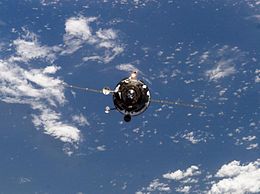
Progress M-60, identified by NASA as Progress 25P, was a Progress spacecraft used to resupply the International Space Station. It was a Progress-M 11F615A55 spacecraft, with the serial number 360.

Progress M-58, identified by NASA as Progress 23P, was a Progress spacecraft used to resupply the International Space Station. It was a Progress-M 11F615A55 spacecraft, with the serial number 358.

Progress M-56, identified by NASA as Progress 21P, was a Progress spacecraft used to resupply the International Space Station. It was a Progress-M 11F615A55 spacecraft, with the serial number 356.
Progress M-54, identified by NASA as Progress 19P, was a Progress spacecraft used to resupply the International Space Station. It was a Progress-M 11F615A55 spacecraft, with the serial number 354.
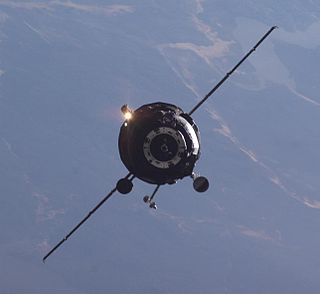
Progress M-53, identified by NASA as Progress 18P, was a Progress spacecraft used to resupply the International Space Station. It was a Progress-M 11F615A55 spacecraft, with the serial number 353.

Progress M-52, identified by NASA as Progress 17P, was a Progress spacecraft used to resupply the International Space Station. It was a Progress-M 11F615A55 spacecraft, with the serial number 352.

Progress M-51, identified by NASA as Progress 16P, was a Progress spacecraft used to resupply the International Space Station. It was a Progress-M 11F615A55 spacecraft, with the serial number 351.
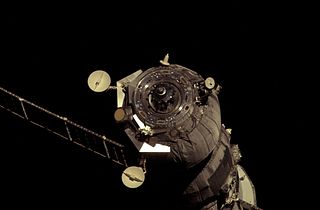
Progress M-50, identified by NASA as Progress 15P, was a Progress spacecraft used to resupply the International Space Station. It was a Progress-M 11F615A55 spacecraft, with the serial number 350.

Progress M-49, identified by NASA as Progress 14P, was a Progress spacecraft used to resupply the International Space Station. It was a Progress-M 11F615A55 spacecraft, with the serial number 249.

Progress M-48, identified by NASA as Progress 12P, was a Progress spacecraft used to resupply the International Space Station. It was a Progress-M 11F615A55 spacecraft, with the serial number 248.
Progress M-46, identified by NASA as Progress 8P, was a Progress spacecraft used to resupply the International Space Station. It was a Progress-M 11F615A55 spacecraft, with the serial number 246.

Progress M-45, identified by NASA as Progress 5P, was a Progress spacecraft used to resupply the International Space Station. It was a Progress-M 11F615A55 spacecraft, with the serial number 245.
Progress M-44, identified by NASA as Progress 3P, was a Progress spacecraft used to resupply the International Space Station. It was a Progress-M 11F615A55 spacecraft, with the serial number 244.
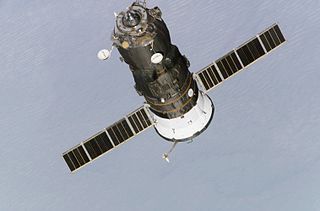
Progress M1-10, identified by NASA as Progress 11P, was a Progress spacecraft used to resupply the International Space Station. It was a Progress-M1 11F615A55 spacecraft, with the serial number 259.
Progress M1-9, identified by NASA as Progress 9P, was a Progress spacecraft used to resupply the International Space Station. It was a Progress-M1 11F615A55 spacecraft, with the serial number 258.

Progress M1-8, identified by NASA as Progress 7P, was a Progress spacecraft used to resupply the International Space Station. It was a Progress-M1 11F615A55 spacecraft, with the serial number 257.
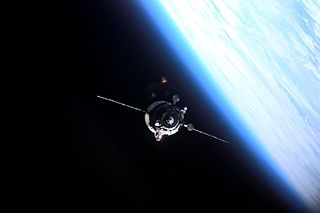
Progress M1-7, identified by NASA as Progress 6P, was a Progress spacecraft used to resupply the International Space Station. It was a Progress-M1 11F615A55 spacecraft, with the serial number 256.
Progress M1-6, identified by NASA as Progress 4P, was a Progress spacecraft used to resupply the International Space Station. It was a Progress-M1 11F615A55 spacecraft, with the serial number 255.

Progress M1-4, identified by NASA as Progress 2P, was a Progress spacecraft used to resupply the International Space Station. It was a Progress M1 11F615A55 spacecraft, with the serial number 253.
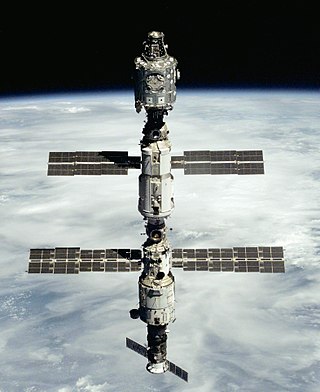
Progress M1-3, identified by NASA as Progress 1P, was the first Progress spacecraft to visit the International Space Station. It was a Progress-M1 11F615A55 spacecraft, with the serial number 251.
